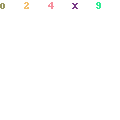 The map below is for those people who need to see the 'whole thing' in order to get a better impression of exactly where Mark is. You need to remember the scale of Australia when you look at a map like that and remember that it has taken 8 days just to cross the Nullarbor. (On the first eight days of the Europe leg Mark cycled from Paris to Poland!)
The map below is for those people who need to see the 'whole thing' in order to get a better impression of exactly where Mark is. You need to remember the scale of Australia when you look at a map like that and remember that it has taken 8 days just to cross the Nullarbor. (On the first eight days of the Europe leg Mark cycled from Paris to Poland!)
The settlement of Penong marks the halfway point of today's journey. A bit of 'surfing' has thrown up the following...
Although Mark saw some fields yesterday, Penong would appear to be the extreme western end of South Australia's wheatbelt. If you have a look at the settlement in Google Earth, you can certainly make out a few shiny silver grain silos. However, you can also see a host of windmills just east of the township.... 

....without which neither cultivation or habitation would really be possible. Penong receives an annual average rainfall of 300mm which is slightly more than desert dry but at the absolute lower limit for wheat cultivation. The benefit of the area for wheat growing, apart from temperatures and sunshine hours, is the low humidity which will discourage many of the common diseases of wheat. The density of windmills (which are somehow iconic in my perceptions of rural Australia) is explained by the supplies of Artesian water in the Anjutabie  basin which underlies this part of Australia.
basin which underlies this part of Australia.
 basin which underlies this part of Australia.
basin which underlies this part of Australia. Here's another one 'borrowed' from Panoramio which is in the vicinity of Penong. In the same area I also culled this image which again coincides with my mental images of rural Australia - absolutely the kind of photo which would have illustrated my geography textbooks many years ago! All we need now is a dingo!
All we need now is a dingo!
 All we need now is a dingo!
All we need now is a dingo!Some 10 miles south of Penong is the shallow Lake MacDonnell which is the location of Australia's (and indeed the southern hemisphere's) largest deposits of gypsum . 

Used mainly in the construction industry, gypsum is formed from evaporated lake sediments.
Here the stockpile ... and below a view from a causeway  across the mineral-rich coloured waters of the lake (different minerals give the different colours, apparently) .....
across the mineral-rich coloured waters of the lake (different minerals give the different colours, apparently) ..... At the end of a day of slightly slacker headwinds than yesterday, Mark reached Ceduna
At the end of a day of slightly slacker headwinds than yesterday, Mark reached Ceduna
 across the mineral-rich coloured waters of the lake (different minerals give the different colours, apparently) .....
across the mineral-rich coloured waters of the lake (different minerals give the different colours, apparently) ..... At the end of a day of slightly slacker headwinds than yesterday, Mark reached Ceduna
At the end of a day of slightly slacker headwinds than yesterday, Mark reached Ceduna  ...... population 2,300 and according to its website "The town of Ceduna is located on the Far West Coast of South Australia, on the scenic shores of Murat Bay on the Great Australian Bight, approximately 800kms from Adelaide and 1900 road kms to Perth. It is set amidst a patch work of grain farms, natural bush and rugged rocky bays, secluded white sandy beaches and ever changing seas. Far enough away from bustling city life to keep its pristine conditions and solitude, Ceduna and its region offers spectacular beaches bordered by isolated bushland, giving an unspoilt, uncrowded and uniquely different place to live or holiday".
...... population 2,300 and according to its website "The town of Ceduna is located on the Far West Coast of South Australia, on the scenic shores of Murat Bay on the Great Australian Bight, approximately 800kms from Adelaide and 1900 road kms to Perth. It is set amidst a patch work of grain farms, natural bush and rugged rocky bays, secluded white sandy beaches and ever changing seas. Far enough away from bustling city life to keep its pristine conditions and solitude, Ceduna and its region offers spectacular beaches bordered by isolated bushland, giving an unspoilt, uncrowded and uniquely different place to live or holiday".
...all that and more! In December 2002, Ceduna received a huge amount of international attention and thousands of visitors across the globe as it lay in the path of totality for an eclipse of the sun


No comments:
Post a Comment